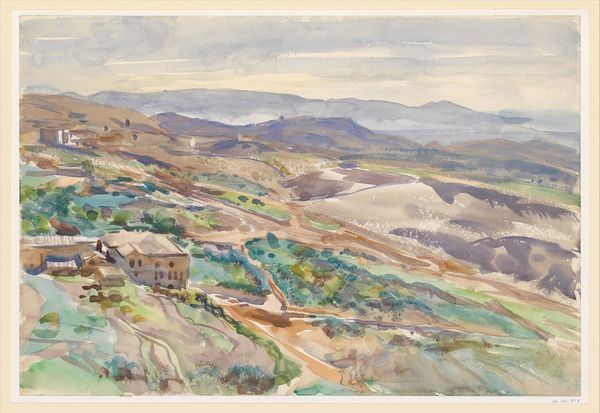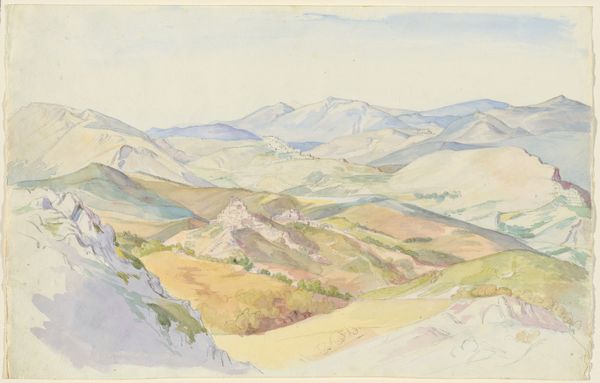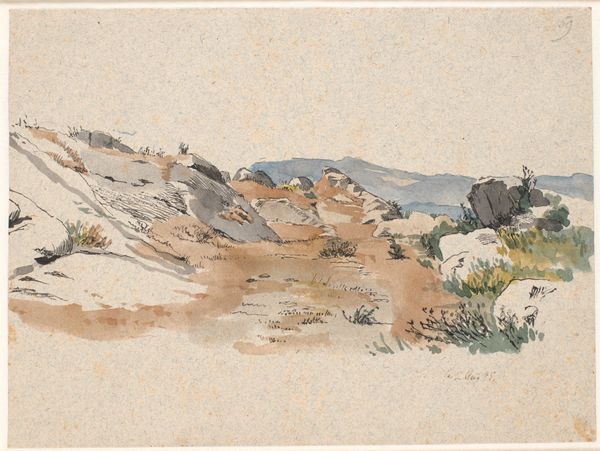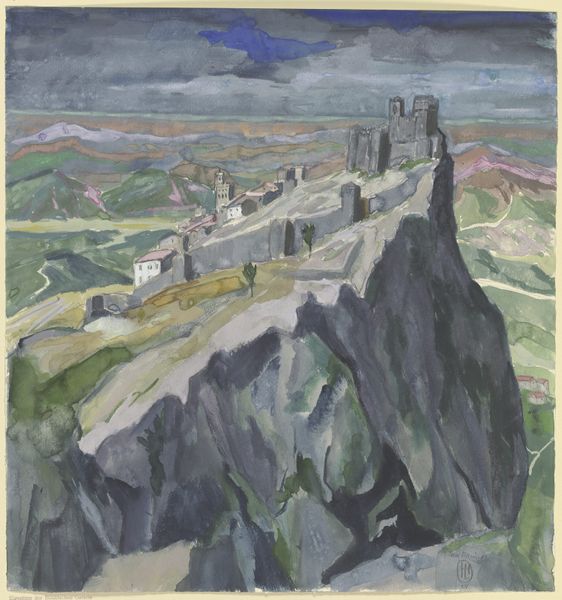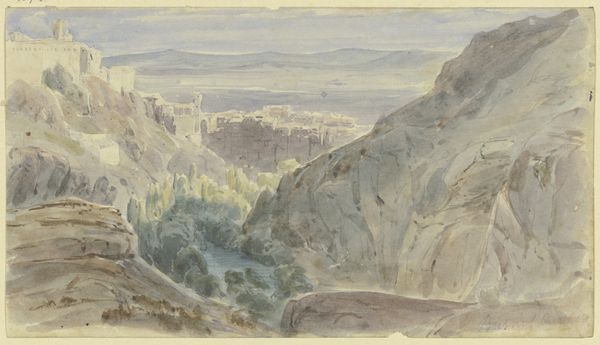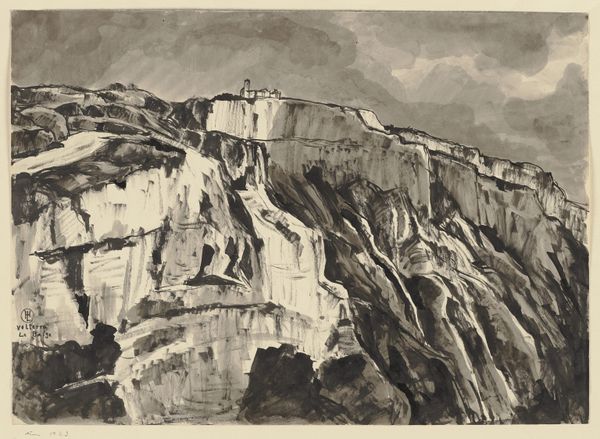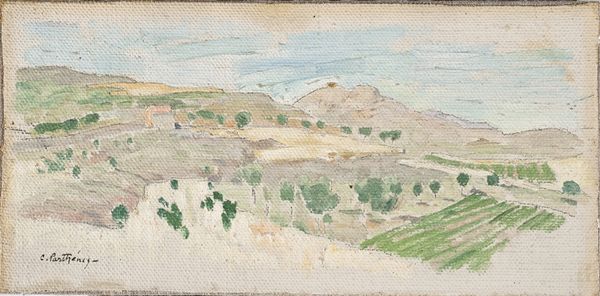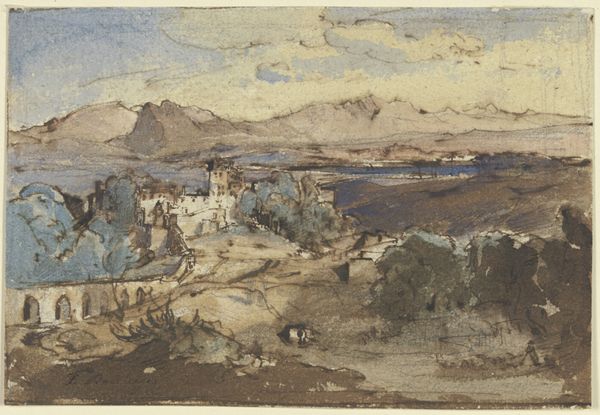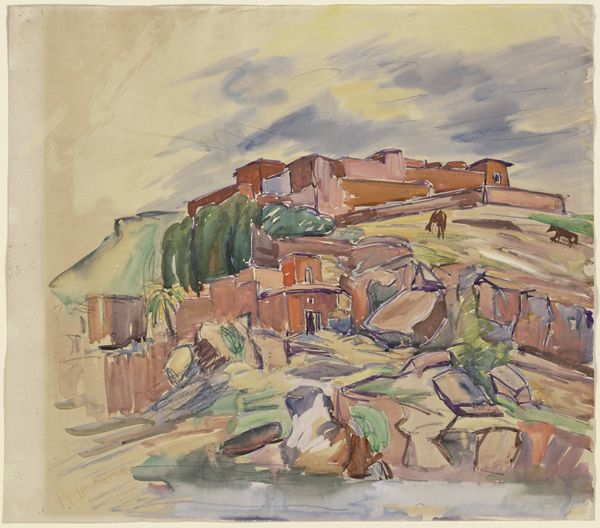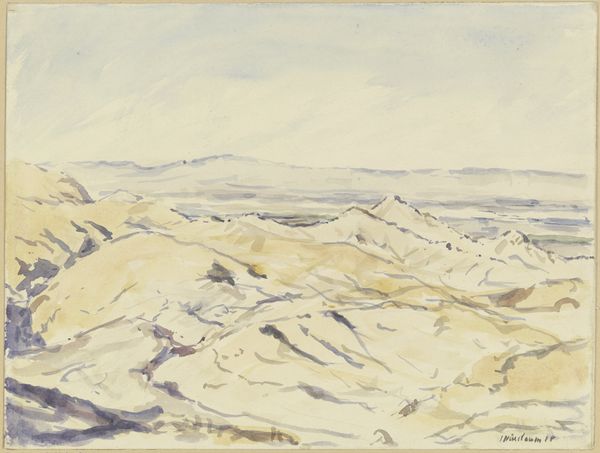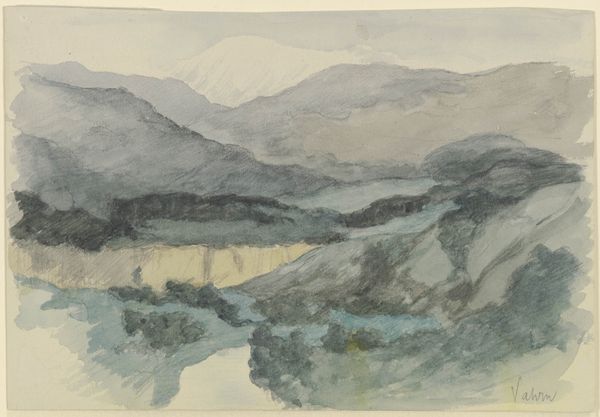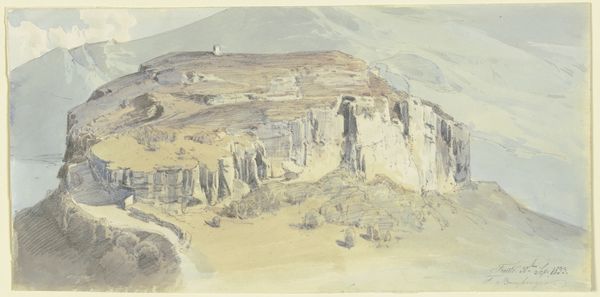
Copyright: Public Domain
Curator: Today, we’re examining "St.-Guilhem-le-Désert (Hérault), cirque du Bout du Monde," a 1928 work by Hermann Lismann, currently housed at the Städel Museum. This landscape study was achieved en plein-air, and executed with watercolor and ink on cardboard. Editor: Immediately, I get this wonderfully subdued feeling. There’s a softness, almost a whisper, in how the mountains rise. The palette seems muted, evoking a sense of quiet contemplation… like staring into the soul of a stone giant. Curator: Indeed, that quietude can be tied to the artistic climate of the time. Lismann, deeply influenced by impressionism, sought to capture the fleeting moment. Note the strategic use of light and shadow; it subtly speaks to the shifting power dynamics embedded in landscape representation itself. The choice to portray a rural area invites questions about class, labor, and the inherent tension between nature and capitalist society. Editor: Hmm, I’m seeing less tension and more a delicate dance. Look at the almost playful strokes used to suggest vegetation; it’s as if he's trying to intimately know each individual blade of grass. I’m reminded of mornings in my own garden, losing myself in the minute details, like some meditation! Curator: But the garden, like art, isn’t a neutral space. Consider how access to such idyllic spaces mirrors societal inequities. The very act of painting, then, carries its own historical baggage—particularly within the canon of landscape art that so often marginalized the working class experience of the land. Lismann doesn't challenge those norms explicitly. Editor: Perhaps. Or maybe he's offering a glimpse, however imperfect, into a harmony we should all strive for. I mean, the path winding through the composition just beckons me to get lost in that very scenery. The dark sky contrasting with the bleached mountains almost screams existential beauty. Curator: The location of the work itself, “cirque du Bout du Monde,” also raises questions of periphery. In what ways do the geographical “margins” reflect our own subjective margins, as individuals? How do we perceive our relationship to power when considering locations removed from centers of capital and influence? Editor: Oh, that's brilliant, yes! Now you’ve put words on why this feels both inviting and haunting, somehow… Thanks, I may need a very long walk to unpack all that. Curator: A walk I encourage. Hopefully, it will prompt you to reflect not only on the painting's aesthetic, but also on our complicity in the societal narratives it represents.
Comments
No comments
Be the first to comment and join the conversation on the ultimate creative platform.
